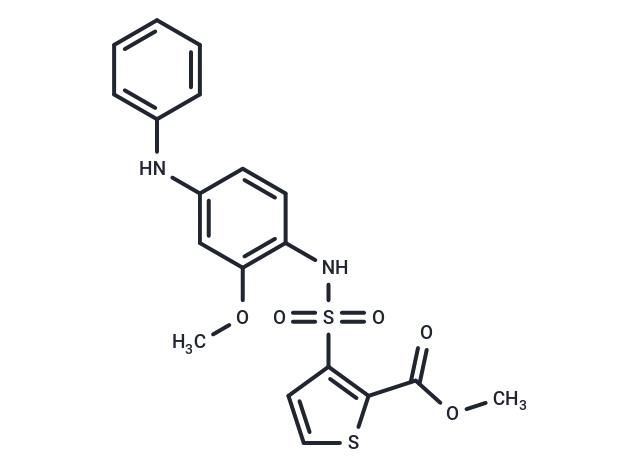Shopping Cart
- Remove All
 Your shopping cart is currently empty
Your shopping cart is currently empty

GSK0660 is an antagonist and inverse agonist of PPARβ/δ.

| Pack Size | Price | Availability | Quantity |
|---|---|---|---|
| 2 mg | $39 | In Stock | |
| 5 mg | $63 | In Stock | |
| 10 mg | $106 | In Stock | |
| 25 mg | $195 | In Stock | |
| 50 mg | $388 | In Stock | |
| 100 mg | $577 | In Stock | |
| 500 mg | $1,260 | In Stock | |
| 1 mL x 10 mM (in DMSO) | $63 | In Stock |
| Description | GSK0660 is an antagonist and inverse agonist of PPARβ/δ. |
| Targets&IC50 | PPARβ/δ:155 nM |
| Kinase Assay | Human astrocytoma cells, 1321N1, are grown to stably express rat P2X7, human P2X4, P2X2a, P2X2/3, P2X1, P2Y1?and P2Y2 recombinant receptors. Agonist, BzATP, 2,3-O-(4-ben-zoylbenzoyl)-ATP or ATP-induced changes in intracellular Ca2+?concentrations are assessed in all of the cell lines using the Ca2+?chelating dye, Fluo-4, in conjunction with a Fluorometric Imaging Plate Reader. The cells are plated out the day before the experiment onto poly-D-lysine-coated black 96 well plates. After the agonist addition, changes in intracellular Ca2+ concentrations are recorded, per second, for 3 min. Ligands are tested at 11 half-log concentrations from 10-10 to 10-4 M. BzATP or ATP concentrations corresponds to the EC70?values for each receptor to enable comparison of antagonist potencies across the multiple P2 receptor subtypes. A 438079 is added to the cell plate and ?uorescence data are collected for 3 min before the addition of agonist, subsequently, data are then collected for another 2 min. The pEC50 or pIC50 values are derived from a single curve ?t. |
| Molecular Weight | 418.49 |
| Formula | C19H18N2O5S2 |
| Cas No. | 1014691-61-2 |
| Smiles | S(NC1=C(OC)C=C(NC2=CC=CC=C2)C=C1)(=O)(=O)C3=C(C(OC)=O)SC=C3 |
| Relative Density. | 1.413 g/cm3 (Predicted) |
| Storage | Powder: -20°C for 3 years | In solvent: -80°C for 1 year | Shipping with blue ice. | ||||||||||||||||||||||||||||||||||||||||
| Solubility Information | Ethanol: 4.18 mg/mL (9.99 mM), Sonication is recommended. DMSO: 50 mg/mL (119.48 mM), Sonication is recommended. | ||||||||||||||||||||||||||||||||||||||||
Solution Preparation Table | |||||||||||||||||||||||||||||||||||||||||
Ethanol/DMSO
DMSO
| |||||||||||||||||||||||||||||||||||||||||

Copyright © 2015-2025 TargetMol Chemicals Inc. All Rights Reserved.